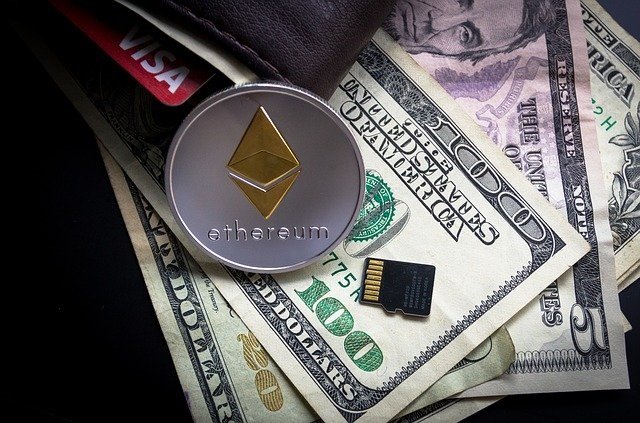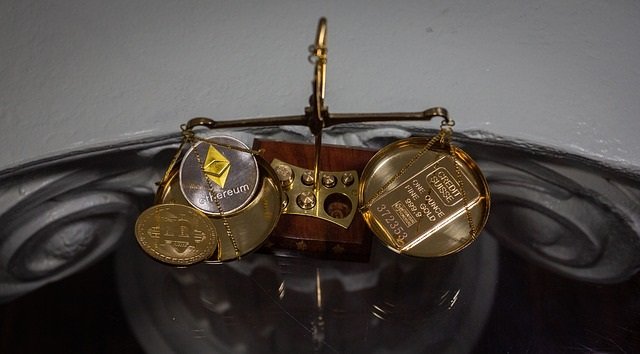DeFi Tax Series #1 - U.S. Tax Implications of DAI

Steemians, today marks the first installment of the DeFi tax Series.
Stablecoins have become increasingly popular in the crypto space. One project of intriguing interest (and complexity) is the DAI stablecoin in the Maker DAO system. DAI is a collateralized stable-coin, which is backed by crytpo assets (such as Ethereum, the flagship collateral in the DAI system).
In this article, we dive into the steps of forming a debt position and the tax implications to the borrower.
About Author
@CryptoTax is a blog on cryptocurrency taxation, geared towards helping individual investors and Steemians navigate the complex tax system.
@CryptoTax is a partner in an 80-person and growing CPA firm. He provides tax compliance services to emerging tech/start-ups and their founders in the crypto space, including international structures. For more information including consultation, feel free to direct message through https://twitter.com/CryptoTaxSTEEM.
Overview
Below is a discussion of the potential tax implications of Collateralized Debt Position Smart Contracts (CDP's) - from the perspective of the borrower. In a CDP, a "borrower" will lock up their Ethereum in order to take out a loan in the form of the DAI stablecoin. For example, in simple terms if 1 ETH worth $150 USD is locked up, up to 150 DAI can be issued to the borrower, and the 1 ETH is held by the decentralized system as collateral (in reality, the collateralization ratio is much higher than 1-1 ETH-DAI in the loan, this is just a simple example). The borrower will accrue a stability fee (determined by MKR token holders), which is paid to the Maker Token holders in the form of MKR when the borrower re-pays their DAI to close out the loan and retrieve collateral. However, if the price of Ethereum drops significantly before the loan is repaid, the ETH could be liquidated with a penalty assessed, and borrower may not be entitled to all of his/her ETH back.

CDP U.S. Tax Implications
The CDP interaction process is as follows (taken from the Maker Whitepaper)
Step 1: Creating the CDP and depositing collateral
"The CDP user first sends a transaction to Maker to create the CDP, and then sends another transaction to fund it with the amount and type of collateral that will be used to generate Dai. At this point the CDP is considered collateralized."(MKR Whitepaper)
U.S. Tax Implication: The funding of the CDP , accomplished through wrapping ETH should be a non-taxable event because WETH is an alternative digital representation of ETH and the ETH and WETH will trade in/out 1 for 1. No property has actually been sold at this point. If ETH is converted into a wrapped asset that is not pure Ethereum backed, however, such as an asset weighted with BTC, then the conversion may be taxable.
Then pooling WETH to create the CDP is a security deposit, another nontaxable transaction. For example, under the recent IRS Cryptocurrency FAQ #37, if tax payers transfer virtual currency from a wallet, address, or account belonging to the taxpayer, to another wallet, address, or account that also belongs to the taxpayer, then the transfer is a non-taxable event. Even though in the Maker DAO system, collateral is being pooled, due to the decentralized nature, the borrower always has their claim of the collateral (unless liquidated) and thus can treat their share of the Pooled ETH as the "account of the taxpayer."
Liquidation & Penalty
If at the end of the loan term, the borrower would end up with more/less ETH when withdrawing (e.g. due to the price fluctuations causing a liquidation) - there is a deemed loss of ETH or realized gain for free ETH. Grey Area - The loss would potentially be treated as nondeductible if the purpose of the loan is non-investment, non-business ( is personal loan collateral). However, if the loan is used for investment, the loss of ETH would be a capital loss. Some tax advisers may consider the loss a capital loss in all situations, so it is best to consult a personal advisor on this decision point.
Step 2: Generating Dai from the collateralized CDP
"The CDP user then sends a transaction to retrieve the amount of Dai they want from the CDP, and in return the CDP accrues an equivalent amount of debt, locking them out of access to the collateral until the outstanding debt is paid."(MKR Whitepaper)
U.S. Tax Implication: For further discussion, it is assumed the Maker DAO system is treated similiar to a loan for U.S. federal income tax purposes. Intent of parties, enforcement of repayment, maturity dates and other factors are considered in the case law pertaining to the U.S. tax treatment of instruments.
Use of borrowed DAI
DAI is not a U.S. dollar, rather is a crypto asset subject to Notice 2014-21 crypto taxation. Although it is intended for DAI to be pegged 1-for-1 to USD, this is not the reality as there are some small fluctuations. Therefore, if the borrowed DAI is used to acquire property, such as capital assets for investment, this would be an independent capital gain/loss transaction. For example, if $100 of DAI is borrowed, and the value is $105 when $105 of BTC is acquired with the borrowed DAI, there is a small capital gain of $5 on the transaction. Further, disposition of BTC would be subject to normal capital/gain loss principles.
Sidebar: With regard to the initial cost basis in the DAI received in the loan, the above example assumes the debt instrument is treated as "nonconginent" because the loan does eventually need to be repaid. However, the taxing authorities could take a harsher view of the CDP transaction as "contingent" and defer the use of the cost basis, then the BTC trade would result in $105 capital gains (instead of $5), and then an offseting $100 capital loss upon an eventual repayment of the DAI CDP contract which fixes the initial loan. This sounds like nonsense but it's a real thing in the U.S. tax law

Step 3: Paying down the debt and Stability Fee
"When the user wants to retrieve their collateral, they have to pay down the debt in the CDP, plus the Stability fee that continuously accrue on the debt over time. The Stability Fee can only be paid in MKR (or DAI if using the CDP Portal UI). Once the user sends the requisite Dai and MKR to the CDP, paying down the debt and Stability Fee, the CDP becomes debt free."(MKR Whitepaper)
U.S. Tax Implication: Because the DAI value at the time of the borrowing (i.e. $0.95) may differ from the DAI value at the time of repayment (i.e. $1.05):
The MKR stability fee is potentially deductible as interest if the loan is for investment purposes or related to a taxpayer's business. However, if the loan is for personal purposes, then most likely the interest is nondeductible personal interest.
The U.S. value of DAI will be different on the loan date versus repayment date, so the value fluctuation could cause U.S. tax implications. Repaying the loan at a USD premium (DAI price is higher at repayment) could be treated as deductible original issue discount if the loan is for investment purposes or related to a taxpayer's business (if the loan is personal this is not deductible, however). Alternatively, re-payment of the DAI loan at a discount (DAI price lower at repayment) could trigger cancellation of debt income.
Investment Interest
Investment interest is interest that can be traced to debt used to buy investment property. Investment property includes property that produces interest, dividends, annuities, or royalties. It also includes an interest in a trade or business activity in which the taxpayer did not materially participate (other than a passive activity). There is a grey area as to whether crypto acquired with DAI would be deemed an investment asset for purposes of this deduction, but it seems like a fair argument. Investment interest is claimed on Form 4952 and is limited to investment income.
Sidebar - It's possible in the future if a wrapped interest in a primary residence is put into Maker DAO, then the loan could qualify for the mortgage interest deduction, however there are many other requirements to consider for this to work.
Step 4: Withdrawing collateral and closing the CDP
"With the Debt and Stability Fee paid down, the CDP user can freely retrieve all or some of their collateral back to their wallet by sending a transaction to Maker."(MKR Whitepaper)
U.S. Tax Implication: This is a wallet transfer and has no tax implications as the collateral was owned by the borrower to begin with. Further, to repeat a concept stated above in step #1, under the recent IRS Cryptocurrency FAQ #37, if tax payers transfer virtual currency from a wallet, address, or account belonging to the taxpayer, to another wallet, address, or account that also belongs to the taxpayer, then the transfer is a non-taxable event. Even though in the Maker DAO system, collateral is being pooled, due to the decentralized nature, the borrower always has their claim of the collateral (unless liquidated) and thus can treat their share of the Pooled ETH as the "account of the taxpayer."
Takeaway
The tax implications of DeFi investments can be rather complex, with each individual step in the transaction needing to be tracked and scrutizined. It is best to consider consulting a tax advisor and crypto software product that can handle complex transactions.
Source: https://makerdao.com/en/whitepaper#the-cdp-interaction-process
IRS Investment Interest Form: https://www.irs.gov/forms-pubs/about-form-4952
IRS New FAQ on Crypto: https://www.irs.gov/individuals/international-taxpayers/frequently-asked-questions-on-virtual-currency-transactions
Picture Credit: https://pixabay.com/photos/business-finance-wealth-currency-3085138/
Picture Credit:https://pixabay.com/illustrations/ethereum-currency-trading-3660218/
Picture Credit:https://pixabay.com/photos/cryptocurrency-weigh-bitcoin-3394866/
Disclaimer: This series contains general discussion of U.S. taxes in a developing and unclear area of tax law. As always, you should consult your own tax advisor in your jurisdiction to determine your specific situation as this is not personal advice; and consider any future guidance by the Congress/IRS after the date of this article. Under Circular 230 to the extent it applies, this article cannot be used or relied on to avoid any tax or penalties in the U.S., its States or any other jurisdictions. This post does not create a client relationship between the author and the reader.
Also, if you'd like a DeFi project examined in a future installment of this series, please let me know in the comments!
Apologies for what is a really late reply (I was off steem for a while) but I have one giant tax question. Namely, how are DAOs themselves (including MakerDAO) taxed?
Let's take MakerDAO for an example.
It seems reasonable (and probably very attractive to the IRS) to treat it as some kind of general partnership, owned by MKR holders. After all, it sure looks like it's a bunch of investors deciding how to manage a shared account for profit. Crypto-wise, MakerDAO pays "dividends" (in the philosophical sense of the word) by buying back outstanding MKR with its profits.
But that's the key word: profits. If MakerDAO is a general partnership, then would not those profits would pass through to MKR holders, regardless of how they are distributed? In the early days of MakerDAO, no one would care, because the amounts were so small, but currently MKR is profiting 10,000 DAI a day, based on daiauctions.com. Conveniently, that's approximately $3.65 million a year. And not one Form 1065 or Schedule K-1 is to be seen anywhere.
Adding to this trouble is that instead of "collecting" DAI, it magically appears in the MakerDAO system, based on the current interest rates. So is that every block that new DAI is minted? Every second? Every day? Every time someone pokes the contracts to update the amount of outstanding DAI?
And where is it? Is it just floating in the ether? (groan) Or wherever the Maker Foundation is registered? Is it anywhere that an Ethereum node runs? Is each individual CDP/Vault taxed based on where the owner is based? (How would one even find out?)
I'm reasonably sure, by some reading of IRS publications, that MakerDAO would be required to file US tax forms if it had significant US income or US investors. It almost certainly has both. And who is supposed to file them? The Maker Foundation would be an easy target for the IRS.
Which brings me to the more philosophical point that I can't see any way that MakerDAO gets away with paying no tax. If one could structure an entity as a "DAO" that pays neither corporate income taxes nor does its income pass through to its investors, everyone would do it. At which point the laws get rewritten and the practice is either banned or taxed.
Still, I have no way to research this further as a layman, so I'm curious about any thoughts you have.
To listen to the audio version of this article click on the play image.

Brought to you by @tts. If you find it useful please consider upvoting this reply.